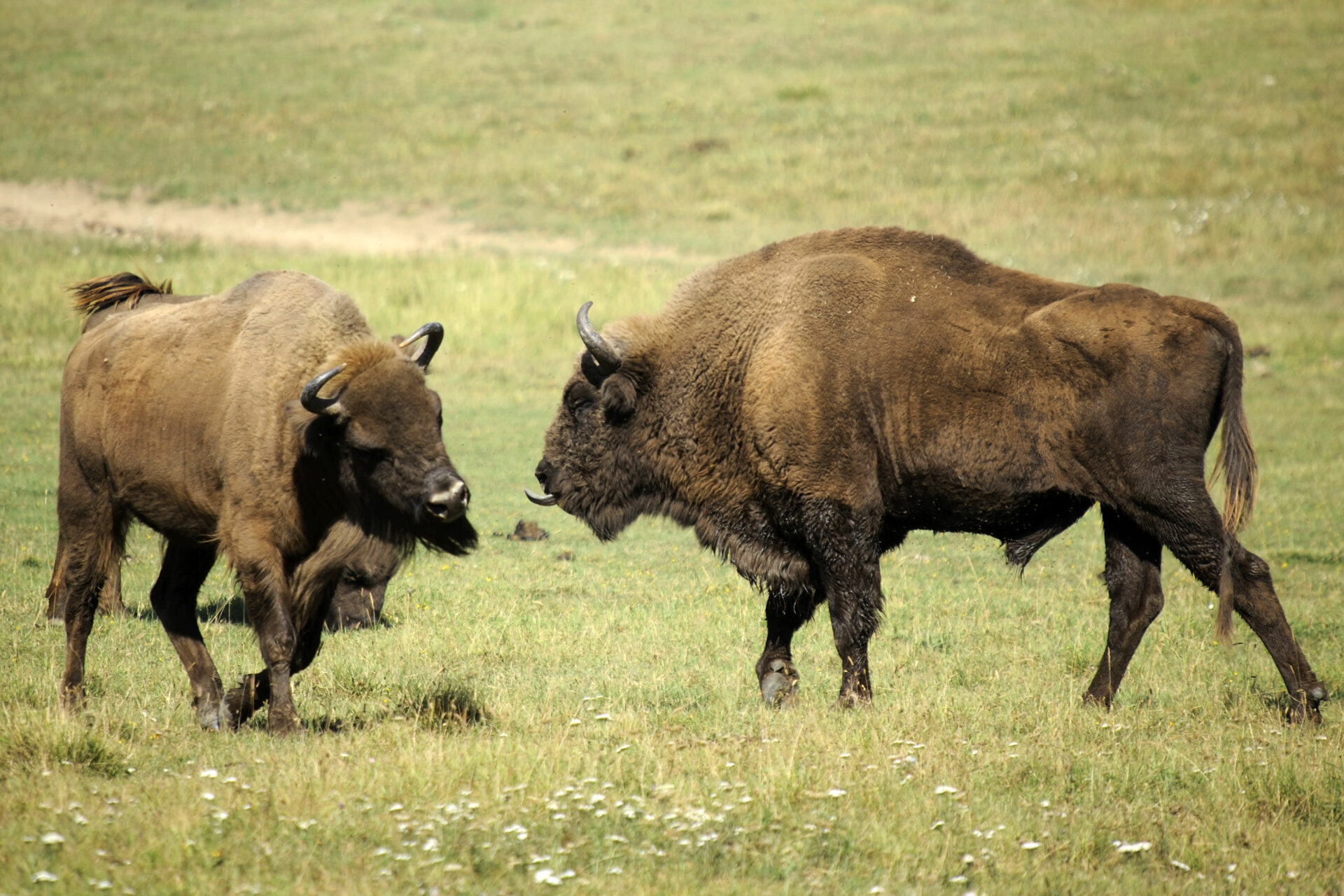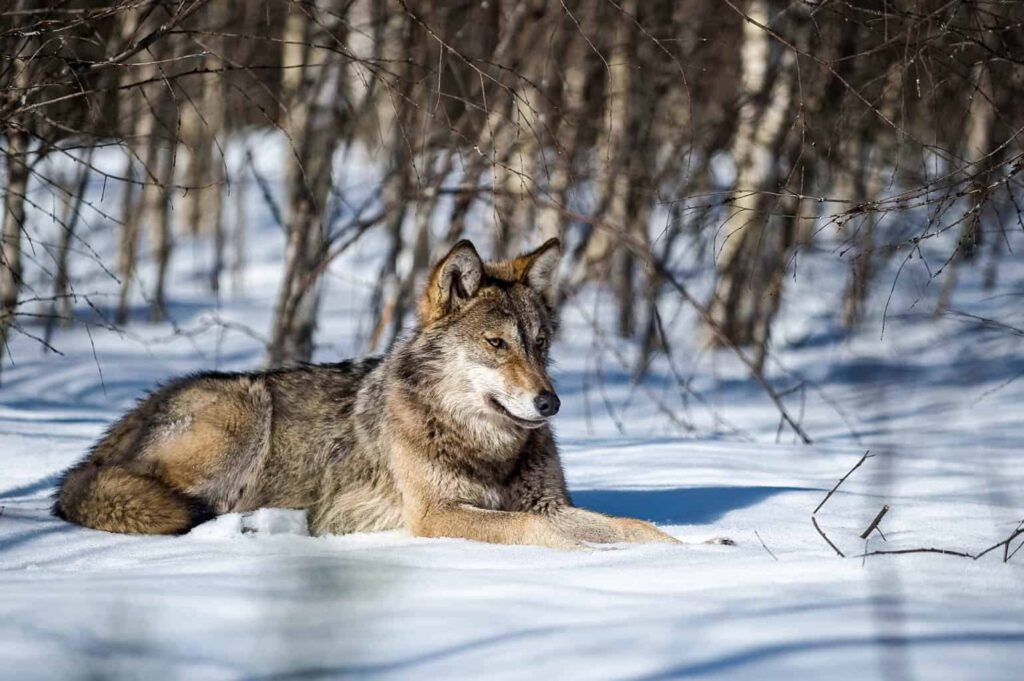Iconic animal species that were (as good as) extinct in Europe for a long time are gradually finding their way back to our regions, according to new research.
There was a time when fate did not leave large wild animals in Europe much choice: to be hunted, or to be chased away; hunted in the case of fur animals such as the beaver and chased away in the case of large predators that made life difficult for farmers.
As a result, a lot of iconic animals disappeared from European forests. While other Western countries such as Canada and the United States still have large mammals in their forests, that is hardly the case in Europe anymore. That is not only a pity for the romantics among us, but also bad news for the ecosystem, which is impoverished as a result.
But the tide seems to be turning, according to a new report by Rewilding Europe, an organisation that strives for the return of wild nature in Europe. Together with a number of nature organisations (including the WWF) and scientists, that organisation mapped 50 different European animal species: 24 mammal species, 25 bird species and one reptile species (the hawksbill turtle, a species of sea turtle).
And most of those species are doing well. Their numbers and their distribution have increased since the middle of the last century, and in some cases spectacularly so.
Eager beavers
Take the Eurasian beaver, the biggest success story. The invention of steel traps was bad news for that species, which (unfortunately for the animal itself) was very popular for its fur and meat. In addition, medicinal properties were attributed to castoreum, or beaver horn, a secretion from a beaver's scent gland. The animal was so overhunted that at the beginning of the 20th century only 1,200 beavers remained.
Fast forward to 2022. Today the beaver is back almost everywhere in Europe, only in the south it is still struggling. And it's very numerous: the numbers have increased by a whopping 16,000 percent since 1950. The beaver is now also swimming around in Belgian rivers, up to the outskirts of cities such as Antwerp and Ghent.
Related News
- Oil drilling in Congo: ‘We’ll keep our forests, you keep your dollars’
- Is pedigree important when buying a dog in Belgium?
- Coral diversity could help reefs survive climate change, study finds
That is also good news for the ecosystem around the beaver. With their dams, beavers change the course of rivers, with more stagnant water and swamps. Dragonflies, fish, amphibians, birds and other mammals such as otters and bats benefit from this.
Moreover, all that stagnant and diverted water also helps humans a little. At beaver dams, water gets longer time to soak into the soil, which also reduces the flood pressure during heavy rain showers. In this way, the beaver contributes a little bit to the objectives of Belgium’s green policies.
Other success stories
Another returning creature is the European bison. That is one of the few remaining megafauna (very large animals, such as the elephant) in our continent.
Once the European bison could be found in areas stretching from France to Ukraine, but by 1924 the animal was extinct in the wild, due to overhunting and the disappearance of the steppes where it lived.

Credit: Wikimedia Commons.
That changed in 1952, when 12 new European bison were released in Poland, Belarus, Lithuania, Russia and Ukraine. Now there are already more than six thousand living in Europe, and there is even a population in Germany.
Then there is the grey wolf, which is a contentious inhabitant of Belgian forests.
The animal is making a real comeback in Central Europe, helped by the disappearance of agriculture from mountainous areas, which makes it quieter for the animal there. From there, the wolf spreads to other regions where it once lived in abundance.
In Belgium, their growing numbers are welcomed by some, but lamented by others – namely farmers.
But it's not just mammals that do well. The monitored bird species are also generally seeing improvements in their population figures.
On average, the numbers of the 25 birds monitored increased by 470% since the middle of the last century. The big success story there is the barnacle goose, whose numbers have increased by 5,000% since 1960. But the numbers of European vultures are also improving.
'For many animals, recovery is not easy'
Not that every page of the report reads like a success story. Many researched animal species still have to contend with the pressure of human activity: housing, for example, but also recreation or agriculture. Predators also seem to have a harder time bouncing back than herbivores.
"For many species of wild animals, the road to recovery is not smooth or easy," says Fransch Schepers, director of Rewilding Europe. "It is a road littered with bumps and potholes."
The Eurasian lynx is such a problem case as its habitat begins to shrink again, after a period of expansion. The same applies to six bird species.
How do we protect them?
Ultimately, it is important to create support among the local human population for the return of those species. That's especially true for predators. Think of the wolf, which encounters a lot of opposition in Belgium.
This requires regulations, for example to control hunting. But it is also not possible without a policy that ensures that people and animals can live together: awareness-raising programmes, public participation events, public support for fences and guard dogs, and compensation schemes for farmers who lose livestock. The EU is already doing this well, according to Rewilding Europe.
Ideally, the organisation states, those returning animals will even benefit the local population by creating opportunities for sustainable tourism. For example, in Poland you can now go and see the European bison in the forest of Białowieża.
Large wild animals can therefore certainly earn their place in Europe. Although that does require a lot of hard work on the part of us humans.

